During many years living in Indonesia, one of my most absorbing hobbies has been the acquisition and keeping of a small collection of freshwater turtles. When my daughter was just a couple of years old she was given a pair of Brazilian Red-Eared Sliders (RES) by a relative. I had planned to dig a small pond in the garden anyway and the growing turtles gave me further reason, and that is what we did.
I had a pond dug with a surface area of around eight metres and with varying depths, perhaps around 30cm at the deepest. Over part of it we had constructed a small saung-style shelter, a kind of gazebo, so we could enjoy sitting out in the garden, overlooking the fish and turtles.
The two RES grew and I began to learn more about their care. I learned that this species had already become a pest in the USA where many had escaped or been discarded in the wild, subsequently displacing indigenous species. RES are very aggressive and competitive animals and they can easily succeed in monopolising limited food resources in their environment.
The same is true, and perhaps sadly more so in Indonesia, where these turtles with their characteristic green-hued shells and skins with red flashes along their faces, are seemingly on sale in every pet shop and even on every footbridge. Often at just a few thousand rupiah each, people assume they will make good, cheap, low-maintenance pets for their children. They do not. As they grow they require space and a clean environment. They can be aggressive and draw blood when they bite or scratch. Many are discarded, unwanted, and have already begun to displace less-aggressive, less competitive, indigenous Indonesian species.
Knowing this, I was not interested in having any more, but as my daughter’s friends’ own RES began to out-grow their welcome we were asked to take them in. So, I had six at various stages of development. My real interest however, was Indonesian turtles. Attending one of the frequent flora and fauna fairs that one sees at malls and shopping centres, I noticed an odd-looking turtle, the only one of its kind, which I was interested to acquire. For the first time I bought a turtle from a trader.
Understanding the devastation that trappers and traders bring to wild species by their activities, I was not happy with what I had done. I discussed it with people I had come to know on my turtle email group, and most agreed that while acquiring a wild-caught specimen or pair was undesirable, it could be accepted if it was done with the intention of breeding captive animals. Not knowing what I had, I sent a photo to an expert I had identified at Monkey Frog in the USA, which I found on the internet. I got news back via email within a couple of days. They did not know what I had either. But the next day I got a second email correctly identifying the turtle as a very old Asian Leaf Turtle (Cyclemys dentata).
This turtle is indigenous to most of South East Asia and India. They have dark, reddish or brown carapaces (upper shells). These are quite round in shape with serrations around the back edges, preventing it from becoming a prey animal too easily. I had read about their dietary requirements, and after a period of getting used to its new environment, mine began to feed on a combination of commercial fish and turtle foods (including freeze-dried blood worm), frozen blood worms, small feeder fish that I periodically introduce to the pond, larger fish I buy from supermarkets or markets as well as a selection of chopped soft fruit and vegetables (bananas in particular). They will also readily take meat and chicken scraps.
One of the most interesting aspects of this hobby is observing the different behaviour patterns of the various turtles. My Asian Leaf Turtle has its own designated areas in the pond where it likes to sit, submerged. Every day it leaves the pond and sits in any one of around three different sites it has dug or acquired for itself around the garden. One is under some small shrubs, another is among tall stems close to the pond and the third an initially most popular is under the air conditioning unit, where there is a space of approximately 10cm in which to crawl and sit out the day. Younger animals would spend more time in the water, but this mature female specimen has a regular daily routine of outings and walks. In the rain she is particularly active, walking around in the puddles from pond to shrubs.
Competing for the space under the air conditioning unit is another turtle acquired from a relative. This is a turtle popularly considered to be from Ambon though it is indigenous to much of Indonesia and South East Asia, Cuora amboiensis. This animal spends much of the day under the unit, retiring to the pond at night. It is very singular in its habits, though has since been joined a by a juvenile of the same species which is apparently aspiring to mirror its behaviour. I have not determined the sex of either of these turtles. Though interesting, I do not plan to breed them.
I then acquired another turtle, though I was not to own it for long. I had seen pictures of a very beautiful small turtle commonly know as Malaysian Snail Eating Turtle (Malayemys subtrijuga). This turtle is found in Cambodia, China, Indonesia (Java and Sumatra), Laos, Peninsular Malaysia, Thailand and Vietnam.
When I spotted a tank of several, I bought one on impulse. This reddish-brown turtle with a distinctive white line around the edge of its upper shell (carapace) and a yellow-striped face, feeds largely on snails, which I keep live in a separate container, along with a stock of small feeder fish. This turtle did not take readily to its new environment and would not feed. Turtles can live for weeks, sometimes months without food. Perhaps this specimen was already sick. It died within a week.
The last turtle I acquired and the one which led to my decision not to acquire any more was my White Bellied Snapping Turtle (Elseya branderhorsti). One UK-based collector and trader, Tom Halvorsen (http://www.tomhalvorsen.co.uk/info/whitebelliedsnapper.htm) has said that the White Bellied Snapping Turtle…an amazingly cute turtle…is one of the most appealing species of the reptile world. Mine was certainly an interesting and absorbing animal to watch. The species is indigenous to Western and Southern Papua and Papua New Guinea. It may also be found in Sulawesi.
Tom Halvorsen claims that they are fairly undemanding in terms of husbandry in captivity, but I must admit I had difficulty in getting mine to feed. It appeared terminally shy and nervous around other turtles, and I was concerned that it would outgrow the pond and its pond-mates (they can reach 40cm across the carapace or top-most shell). I approached Dr. Amy at Taman Safari with a view to donating it to their collection. They agreed and with my daughter we drove up with the turtle. After a period of three months quarantine it was released to its enclosure where it is apparently doing very well.
A very useful site to visit for information and care sheets on turtles is the site of the World Chelonian Trust and its accompanying email group which is moderated by turtle and tortoise expert Darrell Senneke. Hobbyists could contact the site to learn about the many benefits of becoming a member of the World Chelonian Trust.
One of the most fun parts of collecting my turtles was the initial process of species identification. When I acquired a turtle I would photograph it and upload it to galleries of turtle site I knew, requesting experts via email to either identify it or give me further information. When I found the World Chelonian Trust site the process became much easier. All I had to do was look at photos galleries of Asian turtles to know which species I had. This I was able to do successfully for my Malaysian Snail Eating Turtle (Malayemys subtrijuga), my Black Marsh Turtle (Siebenrockiella crassicollis) and my White Bellied Snapping Turtle (Elseya branderhorsti).
Having collected so many different species and having begun to encounter some limited though disconcerting aggression among some of the turtles, I decided that I had enough. I took the advice I had been given by WCT expert, Darrell Senneke and Mary Hopson at the Turtle Puddle (http://www.turtlepuddle.org/). Following some debate about my collection on the group, they had suggested I trim back the group and concentrate on one of two species, breeding them if possible. What I had not realised during my acquisition of turtles was that they really do not do well when mixed with other species. I had also not given due consideration to the required period of quarantine, risking exposing the group to infection from the introduction of new animals. This, I resolved to remedy.
Retaining my daughter’s original two RES and two other smaller specimens (including one male), I donated two large, fully grown specimens to a nature reserve with an enclosed lake. There, they enjoy a natural life but cannot escape to the wider environment. I still had my Asian Leaf Turtle and my Black Marsh Turtle. I intended to acquire mates for these and attempt breeding the species. I also had my fully-grown Ambonese turtle (Cuora Amboiensis) as well as a juvenile. Their habits and needs are so different from those of the other turtles that there is no conflict or competition among them. There was no reason to find a new home for them.
Now I have a stable environment for my turtles. I know quite a few traders though I am not tempted to purchase any new turtles. I hope that anyone attracted to this hobby will be able to make a wiser decision than I initially did about the number and nature of species that you will have. These animals do make attractive, responsive pets, even RES. However, they do need care and a suitable environment.
Sunday 16 August 2009
Subscribe to:
Post Comments (Atom)




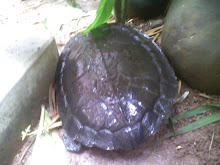


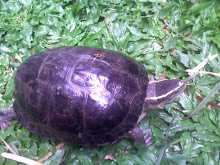









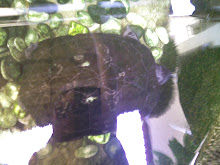














.jpg)
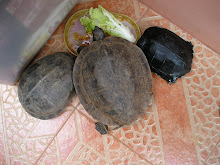
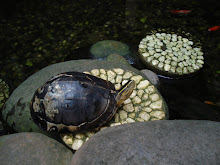+085.jpg)




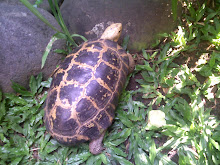
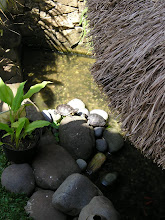.jpg)
No comments:
Post a Comment